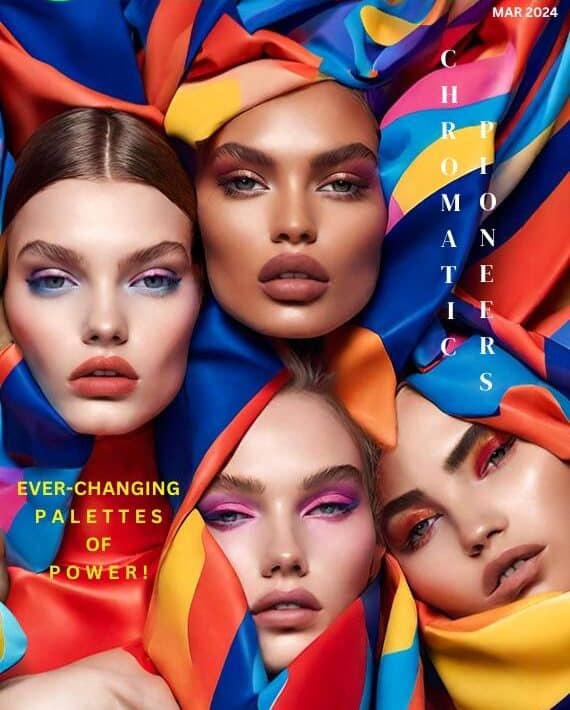Silenced Voices: How AI, Social Media Shadow Banning, and a Vocal Generation’s Quest for Freedom Clash Amid the Palestinian Genocide

They say fashion tells a story, but for Dina Yassin,…
The Palestinian Genocide has thrust the world into a disconcerting reality where advanced technologies, particularly Artificial Intelligence (AI), and the practice of social media shadow banning are wielded as tools of control, casting a long shadow over the freedom of speech.
In our digital age, where social media platforms like Facebook, Twitter, and Instagram serve as the modern agora for communication and information sharing, a troubling trend has emerged within this conflict. These platforms have come under fire for their content moderation policies, often seen as bending to political pressures. The consequence has been the systematic silencing of voices expressing historic insights, truth, and the will for ceasefire, with accounts and content shedding light on their plight facing unwarranted suspension or removal.
AI, harnessed by Israeli authorities, has become a central player in this narrative manipulation. It orchestrates digital propaganda campaigns designed to mold public opinion in favor of a particular perspective. These campaigns distort reality, rendering independent reporting and authentic voices collateral damage in the battle for information control.
This technological stranglehold translates into a dire restriction on lack of censorship. Palestinians, who already grapple with the harsh realities of occupation, find themselves further marginalized within the digital sphere. The looming specter of repercussions, whether from state actors or tech giants wielding AI algorithms, coerces individuals into self-censorship, stifling their voices and suppressing their experiences.
In essence, AI becomes a virtual Panopticon, a mechanism of social and psychological control. Much like the watchman in the Panopticon’s tower, AI is omnipresent, creating a constant sense of surveillance. This atmosphere of perpetual scrutiny chills open dialogue and dissent, effectively creating a society plagued by suspicion and fear.
Furthermore, the current generation is one that values and vigorously exercises its right to express its opinions freely. The digital era has empowered individuals to share their thoughts, experiences, and activism with a global audience. This tier refuses to be silenced and believes in the transformative power of information and dialogue.
However, even as this generation champions free expression, it faces a new challenge – social media shadow banning. The covert suppression of opinions on social media platforms obstructs the free flow of information. Users, especially those who raise their voices against oppression, are often subject to algorithmic biases that limit the reach of their content. This insidious form of censorship silently undermines the fundamental right to express dissenting opinions.
Moreover, recent developments in Israel’s counter-terrorism law have raised further concerns. On November 8th, Israel’s Knesset passed an amendment introducing a new criminal offense known as the “consumption of terrorist materials.” This amendment makes it illegal for individuals to systematically and continuously consume publications associated with Hamas and ISIL (ISIS) under circumstances that indicate identification with these groups. The bill, approved by a 13-4 majority, carries a maximum penalty of 2 years in prison.
In the face of this stark reality, a growing chorus is demanding transparency and accountability. Policymakers, tech companies, and civil society must engage in meaningful discourse on the ethical use of AI and technology, as well as the responsibilities of digital platforms to uphold the lack of censorship. It is crucial to ensure that innovative technologies, particularly AI, do not become instruments of repression and control.
The Israeli-Palestinian War serves as a somber reminder of the far-reaching implications of AI, social media shadow banning, and technology on freedom of expression, particularly within conflict zones. What was once seen as a beacon of progress now casts a shadow of uncertainty, capable of both empowerment and repression. As the world grapples with these consequences, it becomes paramount to safeguard the intrinsic right to free speech, using technology, including AI, to amplify voices rather than smother them. It is a clarion call for a united front in defense of this indomitable right and a resounding condemnation of the suppression of voices in the face of oppression.
What's Your Reaction?
They say fashion tells a story, but for Dina Yassin, it’s more than just storytelling—it’s an art, a science, and a little bit of magic. As the Co-Founder, Chief Storyteller, and Editor-in-Chief of GAZETTA—among many other titles—she’s the woman behind the words, the visionary shaping narratives, and the creative force redefining luxury fashion journalism in the digital age. With over two decades of experience in luxury brand consulting, creative direction, and trend forecasting, Dina has worked with some of the most coveted names in the industry—think Van Cleef & Arpels, Kenzo, Bvlgari, Hermès, and Chloe—all while keeping her finger firmly on the pulse of what’s next. Her work has graced the pages of Vogue Arabia, Harper’s Bazaar, Condé Nast Traveler, Mojeh Magazine, Vanity Fair, Marie Claire, 7 Corriere, and The Rake—among many other top-tier titles—solidifying her reputation as a fashion and luxury thought leader. But here’s the twist—Dina isn’t just reporting on the future; she’s creating it. Under her leadership, GAZETTA introduced EVVIE 7, an AI-driven journalist pushing the boundaries of editorial innovation. Because in a world where algorithms influence aesthetics as much as designers, Dina ensures GAZETTA stays one step ahead, seamlessly blending technology, culture, and high fashion into a platform that speaks to the modern, forward-thinking luxury consumer. Beyond her editorial expertise, Dina is a renowned luxury brand consultant, trend strategist, and creative powerhouse who thrives at the intersection of fashion, culture, and digital storytelling. Whether she’s consulting on luxury branding, forecasting emerging trends, directing high-profile fashion campaigns, or curating immersive experiences, she’s always asking the big questions—What’s next? Who’s shaping it? And most importantly, how do we make it unforgettable? One thing is certain: Dina Yassin is always at the forefront of what’s next.



